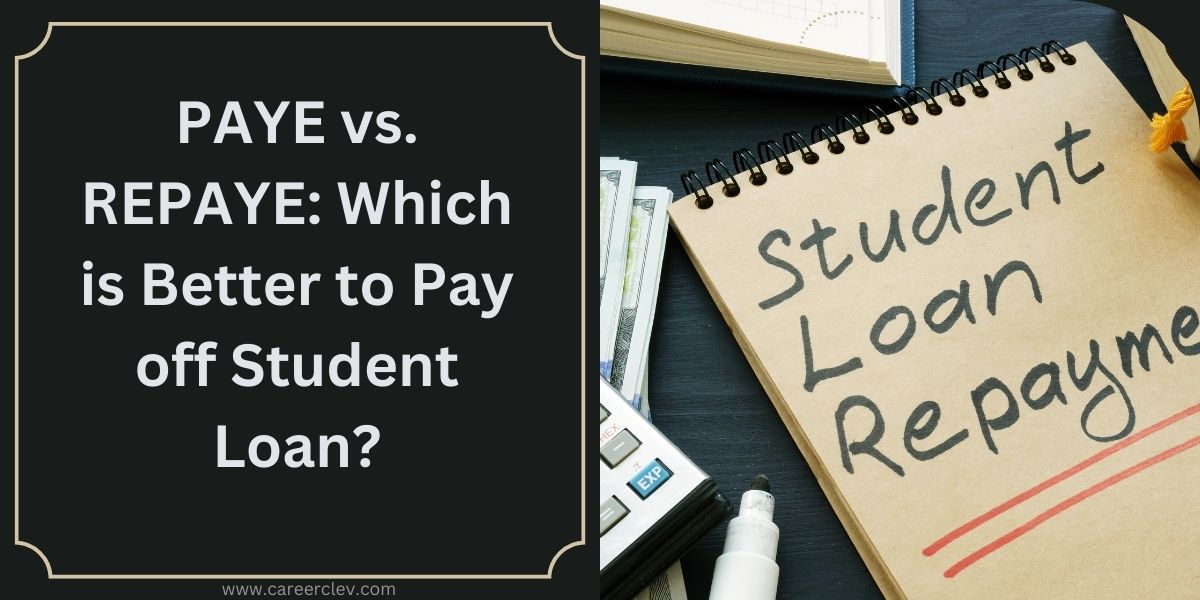People with high income potential and large amounts of debt, such as dentists or physicians, may want to consider factors such as PAYE vs. REPAYE (monthly payment cap and superior interest subsidy).
When deciding between PAYE and REPAYE, you’ll need to do the math to see which plan is better for you, but here are some guidelines to help you decide.
PAYE vs REPAYE (Definitions and What they are)
Pay As You Earn (PAYE) and Revised Pay As You Earn (REPAYE) are both federal income-driven repayment plans that expand the term of your student loan.
They can also, however, set fees at 10% of your expendable income and pardon any remaining balance after the loan term.
In general, if both spouses have an income, PAYE is a better option for married borrowers. REPAYE is usually preferable for single borrowers and those who do not qualify for PAYE.
What is income-driven repayment?
Income-driven repayment (IDR) plans set your monthly student loan payments based on your actual income.
After 20 or 25 years of payments, an IDR can reduce the size of your monthly payment and result in partial forgiveness of your federal student loan debt.
Your monthly payment will be a percentage of your “discretionary income,” which is the difference between your annual income and 150 percent of the poverty line in your state (determined by family size).
In other words, it is the money left over after you have met the standard expenses for a family your size (rent, utilities, food, taxes, etc.).
What are their Requirements (PAYE vs REPAYE)?
To apply for PAYE, the candidate must be experiencing some financial hardship.
You must have received a federal loan on or after October 1, 2007, and you must have no outstanding federal loans at the time.
Alternatively, you must have received a loan disbursement on or after October 1, 2011, or you must have consolidated on or after that date.
Anyone with qualifying federal loans, on the other hand, is eligible for a REPAYE application.
Payment Amount And Repayment Period Between PAYE and REPAYE
If you’re wondering about the payment plans for PAYE vs. REPAYE, this subheading is, therefore, your hail Mary.
You are charged 10% of your discretionary income for PAYE, but never more than you would on the standard 10-year plan.
The REPAYE, on the other hand, charges 10% of discretionary income with no cap. Furthermore, payments may be higher than they would be under the standard plan.
Will your spouse’s income be considered when it comes time to pay? If you file taxes separately, it’s a no for PAYE. Even if you file taxes separately, REPAYE is a resounding yes.
It’s also worth noting that the standardized repayment period for PAYE is 20 years. REPAYE, on the other hand, divides the repayment period into two parts: 20 years if you only have undergraduate loans and 25 years if you have graduate school loans.
What is the capitalization limit for each?
In the first three years of PAYE repayment, the government pays 100 percent of the unpaid interest on subsidized loans.
The government, on the other hand, pays 100 percent of the unpaid interest on subsidized loans during the first three years of repayment.
It also pays half of any unpaid interest on subsidized loans after the first three years and half of any unpaid interest on unsubsidized loans at any time.
Furthermore, the REPAYE has no cap on the amount that can be capitalized.
Can you switch from REPAYE to PAYE?
According to Kantrowitz, you can change repayment plans on federal student loans whenever you need to, and you can switch between any of the repayment plans.
If you want to change your repayment plans, he recommends contacting your loan servicer.
However, if you want to switch plans, you must still meet the program’s eligibility requirements.
You should also carefully consider the benefits and drawbacks of each program and whether switching from one to the other makes financial sense. In some cases, it may be advantageous.
How to Choose Which is Better Between PAYE vs. REPAYE
Making sense of the subtle differences between PAYE and REPAYE can make your head spin.
As a result, we’ve compiled a list of suggestions that we believe will assist you in making the best decision possible.
1. Confirm that IDR is Appropriate for you
Private student loans, including PAYE and REPAYE, are not eligible for any of the four income-driven repayment plans (IDR).
There are two main reasons to use PAYE or REPAYE to repay federal student loans:
Payments on the standard 10-year repayment plan are unaffordable. Or you want to be eligible for public service loan forgiveness.
In either case, your goal is likely to be to have the lowest monthly payment possible, so an income-driven repayment plan makes sense.
2. Determine Whether You are Eligible for PAYE or REPAYE
You must meet all of the requirements listed above in order to be eligible for PAYE.
The income eligibility requirement for PAYE effectively means that you only qualify if you would benefit from the plan by receiving a lower payment.
If you do not meet the PAYE requirements, your choice is simple, go for REPAYE.
3. Calculate the Numbers
To compare monthly payments for PAYE vs REPAYE, and loan repayment plans, use the Loan Simulator tool provided by Federal Student Aid.
In addition, the tool displays total interest costs and loan forgiveness potential for each plan.
Compare the monthly payment amounts for each repayment plan and select the one with the lowest monthly payment.
Conclusion
Income-driven repayment plans can be a good solution for many federal student loan borrowers. But PAYE, REPAYE, and other IDR Plans aren’t always right for everyone.
Go through this article to check how suitable they are for you. Which is better between the two?



 Jobi.ng
Jobi.ng



